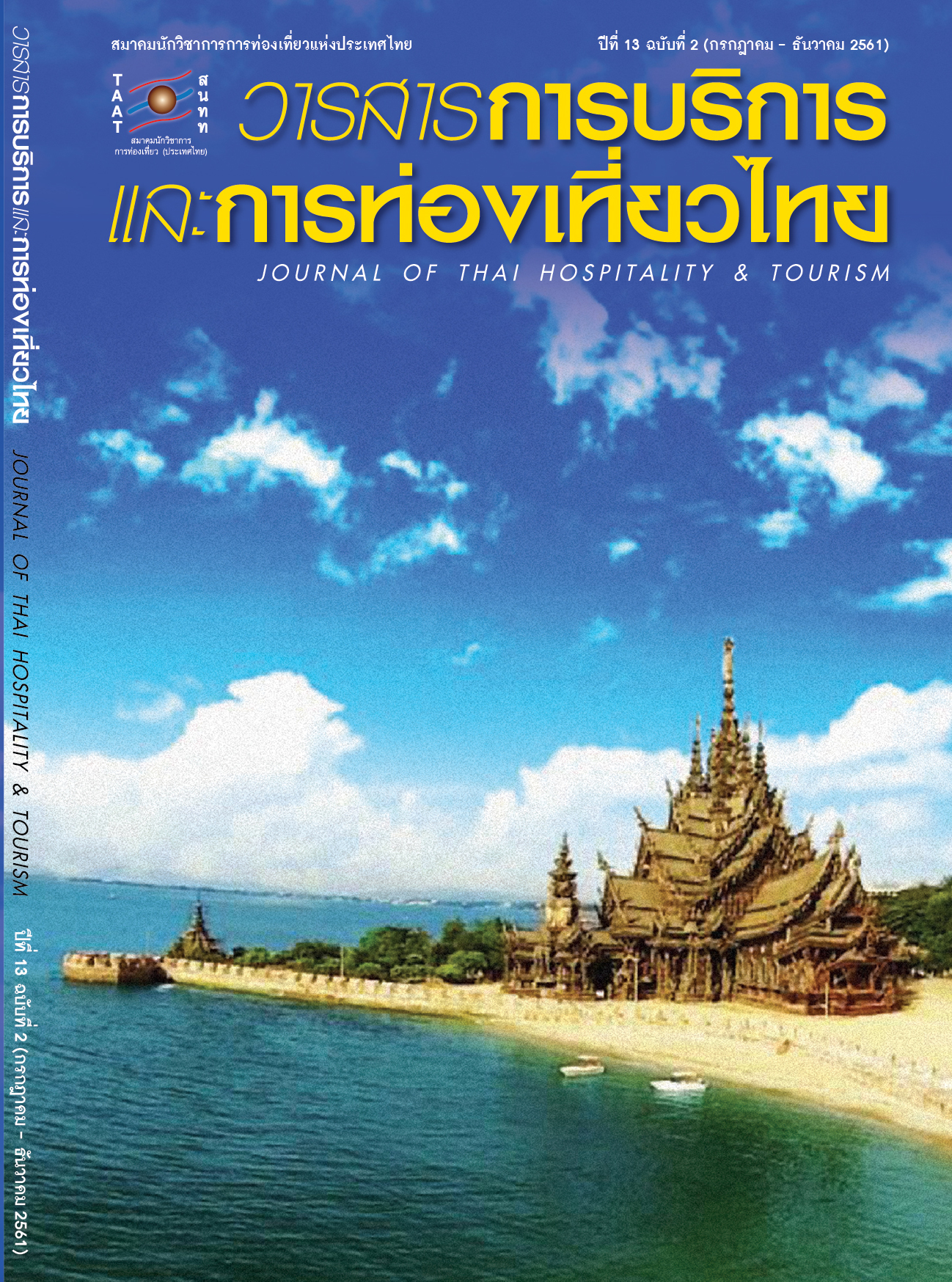Evaluation of Policy Promoting Tourism in Thailand
Main Article Content
Abstract
Tourism sector is a major sector that contributed high domestic demand for Thai Economy. Government budget allocated to promote tourism sector has been increased sharply in the past decade. This paper aims to evaluate effectiveness of tourism promoting policy by estimated SVAR and calculated the impulse response function. The results indicated that tourism promoting campaign can stimulate economic expansion by 2 channels: direct impact and indirect impact on GDP. The impulse of tourism promoting campaign will followed by the response of GDP with statistically significance. The results also indicated the high speed of absorbing shock on foreign tourism revenues. Following the findings, the policy in order to enhance the sustain economic expansion an also for economic development should be implemented continuously. Moreover, not only the policy for demand side but the supply management also considered to attract first visit tourists and revisit tourists in order to enhance the sustain economic expansion an also for economic development.
Article Details
References
[2] Chatziantoniou, I., Filis, G.,Eeckels, B., & Aplstolaskis, A. (2014). Oil Prices, Tourism Income and Economic Growth: A Structural VAR Approach for European Mediterranean Countries, Working Paper University of Portsmouth.
[3] Chaivichayachat, Bundit. (2016). Policy Promoting Tourism, Foreign Tourism Revenue and Economic Growth in Thailand: Causality and Response Patterns, International Journal of Applied Business and Economic Research, 14(6), 3937-3957.
[4] Chaivichayachat, Bundit. (2016). Causality between Foreign Tourism Revenue and Economic Growth in the Decade of Tourism Promoting Campaign in Thailand. presented in International Conference on Education, Psychology, and Social Sciences (ICEPS), 3-4 August, University Kuala Lumpur Business School, Kuala Lumpur, Malaysia.
[5] Chaivichayachat, Bundit. (2016). Tourism Promoting Policy and Demand for Tourism in Thailand. presented in International Conference on Hospitality, Leisure, Sports, and Tourism-Summer Session 12-14 July, Kyoto, Japan.
[6] Chaivichayachat, Bundit. (2015). Impacts of Changing in Macroeconomic Factors on Foreign Tourism Revenue and Sectoral Output in Thailand. International Journal of Business and Management Study, 2, 65-66.
[7] Chaivichayachat, Bundit. (2015). The Impacts of Changing in Macroeconomic Factors on Foreign Tourism Revenue and Sectoral Output in Thailand. presented in International Conference on Advances Economics, Social Science and Human Behavior Study (ISSHBS), 21-22, February, 2015, Bangkok, Thailand.
[8] Chaivichayachat, Bundit. (2014). Impacts of Thai Baht on Tourism, Sectoral Final Demand and Sectoral Output in Thailand. International Journal of Business and Management Study, 1, 17-21.
[9] Chaivichayachat, Bundit. (2014). Impacts of Thai Baht on Tourism, Sectorial Final Demand and Sectoral Output in Thailand presented in International Conference on Advances in Economics, Management and Social Study (EMS14). 2-3 August, Kuala Lumpur, Malaysia.
[10] Georgantopoulos, A. G. (2013). Tourism Expansion and Economic Development: VAR/VECM Analysis and Forecasts for the Case of India. Asian Economic and Financial Review, 3(4), 464-482.
[11] Ghartey, E. E. (2010). Tourism, Economic Growth and Monetary Policy Jamaica, prepared for 11th Annual SALISES 2010 Conference in Port of Spain, Trindad-Tobago, 24-26 March 2010.
[12] Samimi, A. J., Sadeghi, S. & Sadagrghi, S. (2011). Tourism and Economic Growth in Developing Countries: P-VAR Approach. Middle-East Journal of Scientific Research, 10(1), 28-32.
[13] Song, H., & Witt, S. F. (2006). Forecasting International Tourist Flows to Macau. Tourism Management, 27, 214-224.
[14] Seetanah, B., Padachi, K., & Rojid, S. (2011). Tourism and Economic Growth, World Institute for Development Economics Research Working Paper No.2011/33.
[15] Tran, X. (2014). Application of Vector Autoregressive Model in Tourism. E-Review of Tourism Research, 11(3/4), 34-49.


